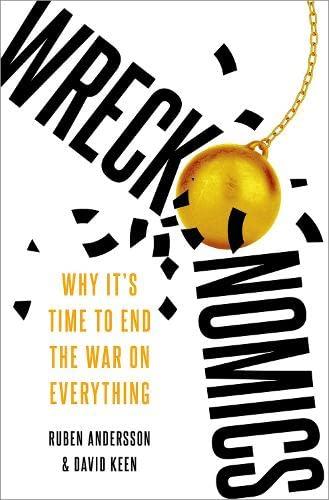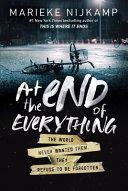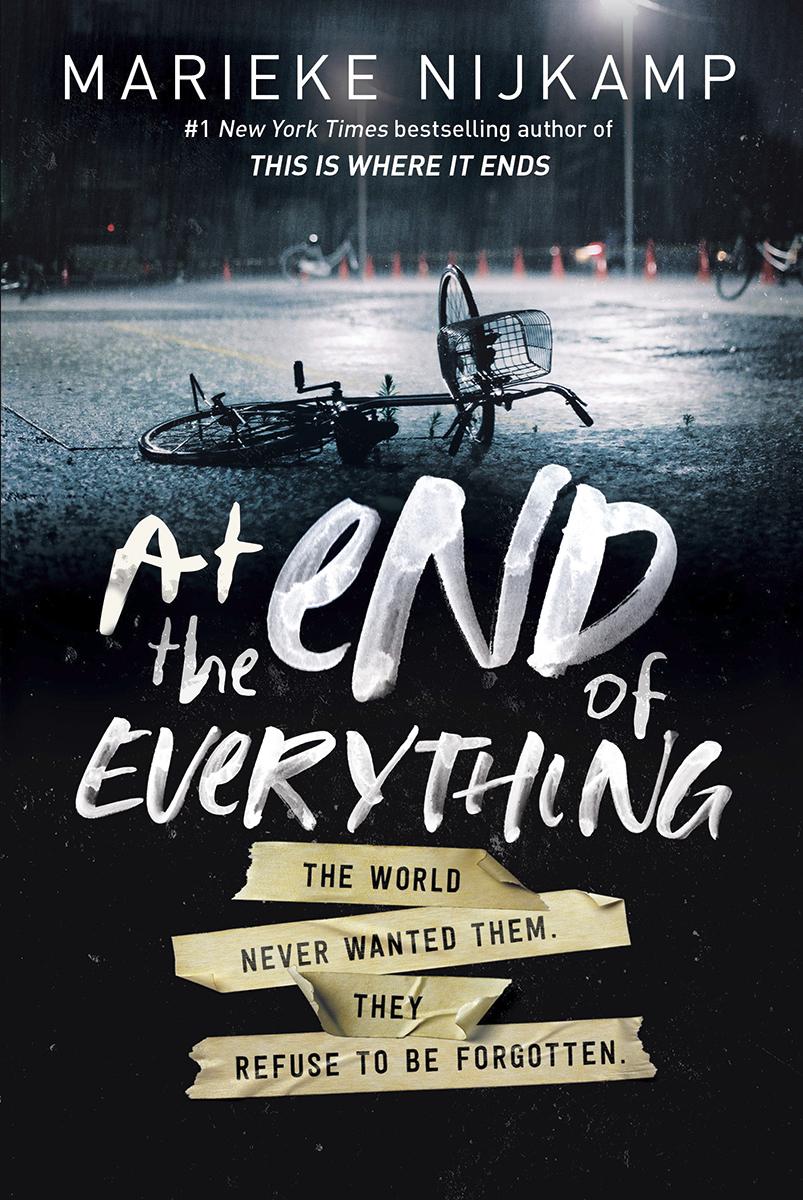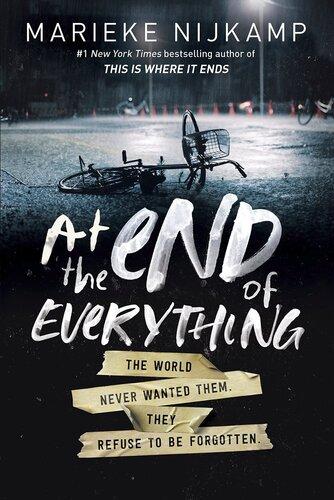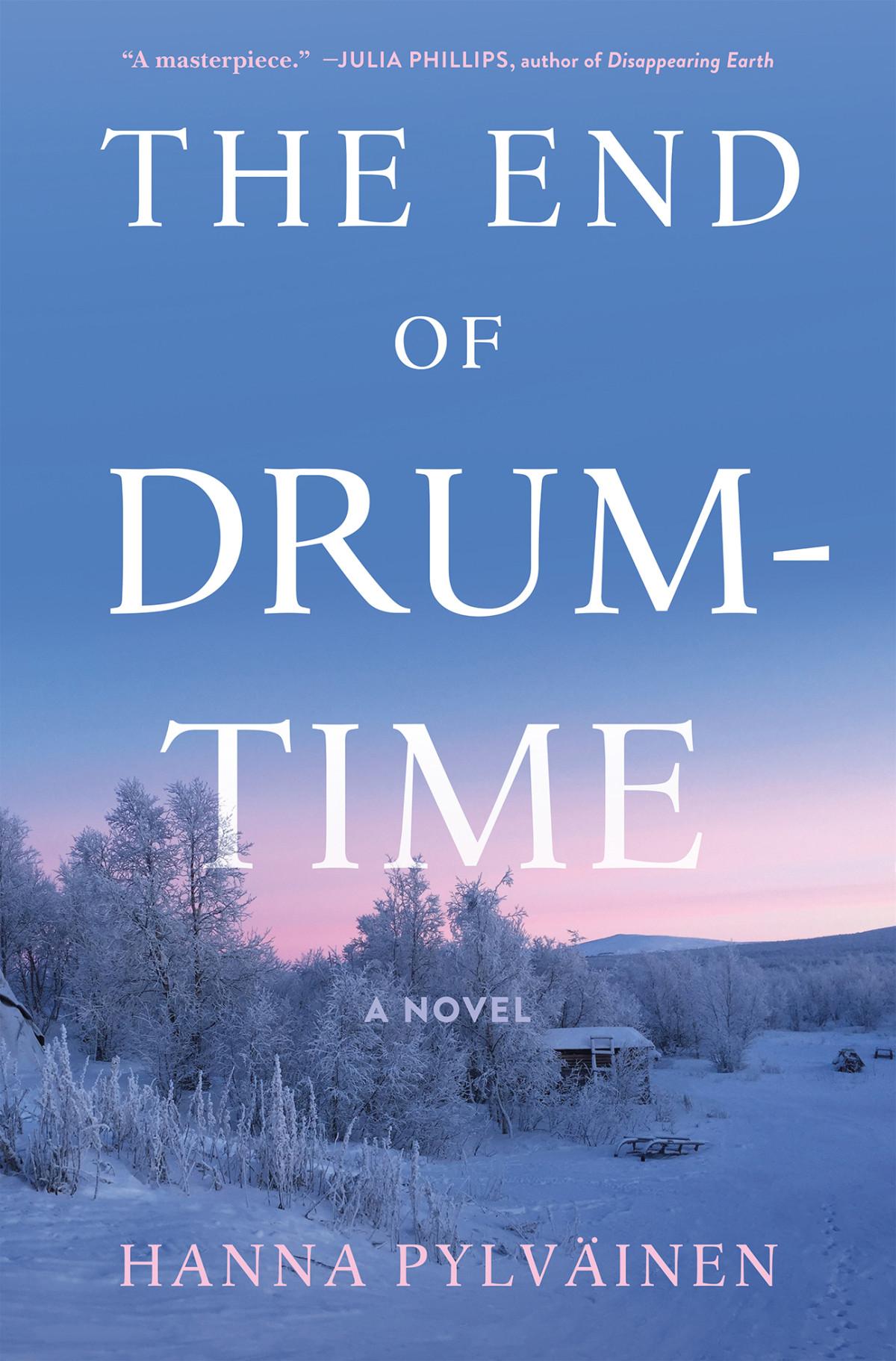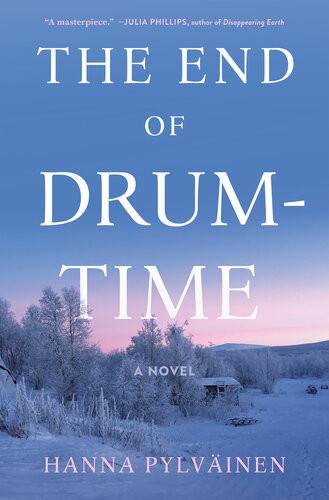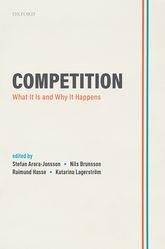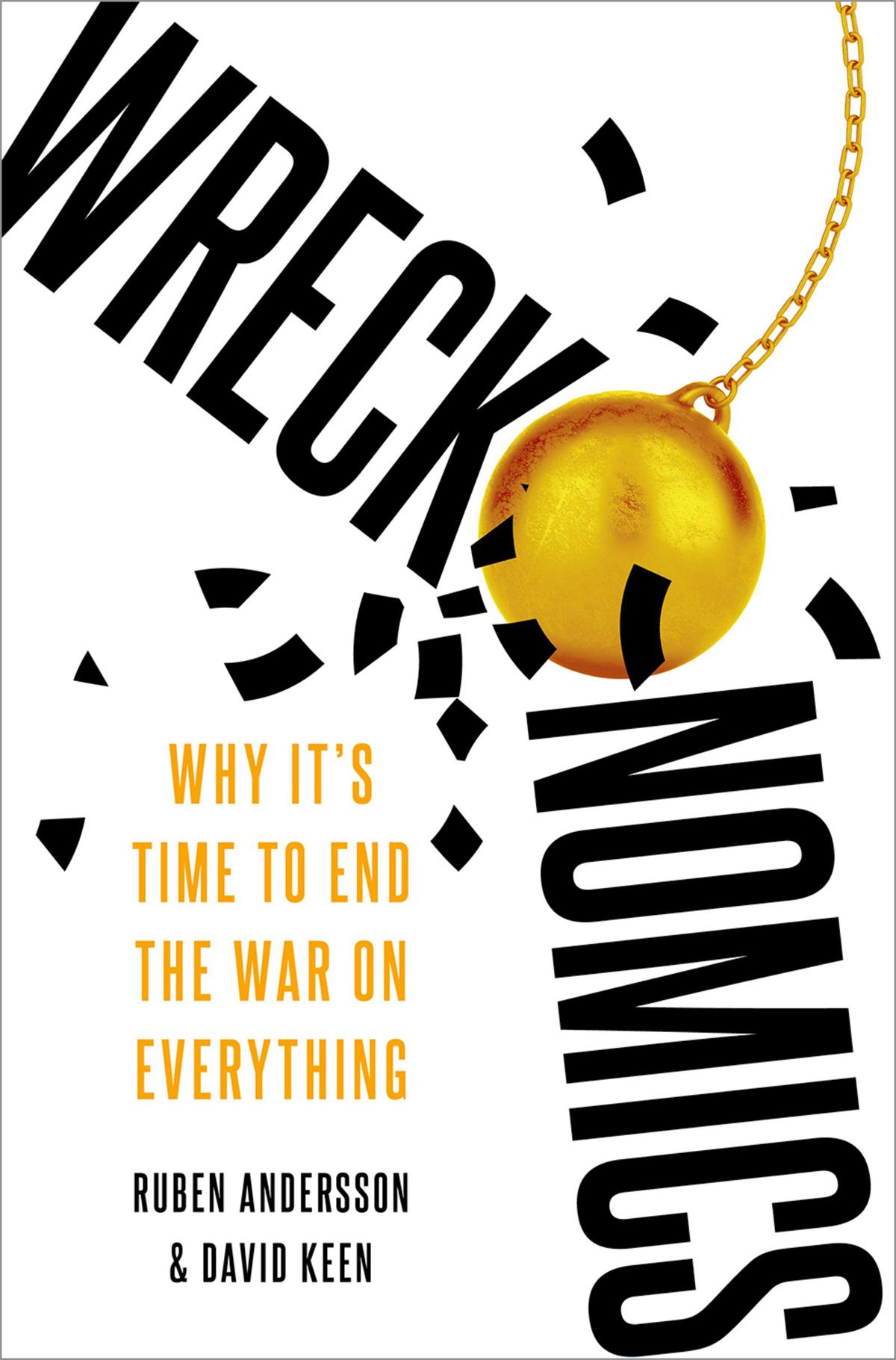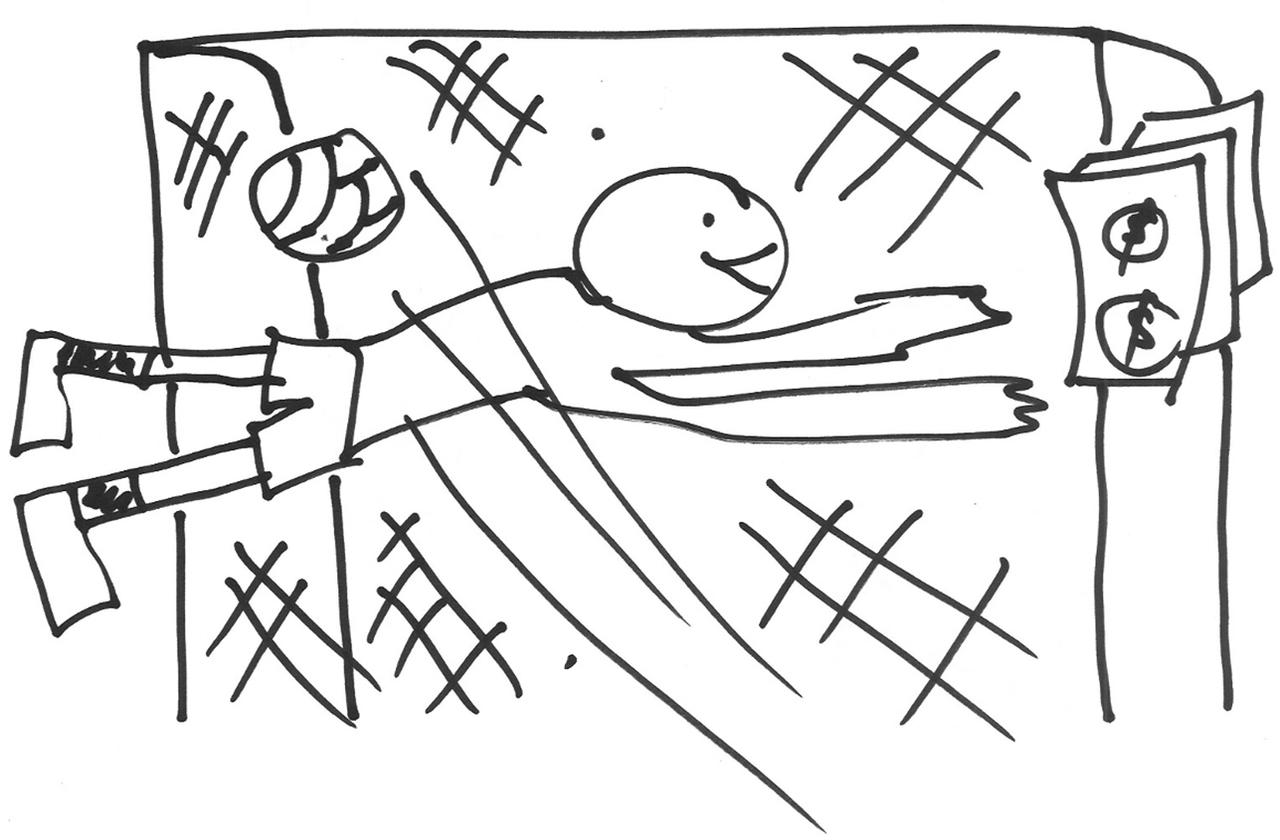WRECKONOMICS
WHY IT’S TIME TO END THE WAR ON EVERYTHING
RUBEN
ANDERSSON AND DAVID KEEN
Oxford University Press is a department of the University of Oxford. It furthers the University’s objective of excellence in research, scholarship, and education by publishing worldwide. Oxford is a registered trade mark of Oxford University Press in the UK and certain other countries.
Published in the United States of America by Oxford University Press 198 Madison Avenue, New York, NY 10016, United States of America.
© Ruben Andersson and David Keen 2024
All rights reserved. No part of this publication may be reproduced, stored in a retrieval system, or transmitted, in any form or by any means, without the prior permission in writing of Oxford University Press, or as expressly permitted by law, by license, or under terms agreed with the appropriate reproduction rights organization. Inquiries concerning reproduction outside the scope of the above should be sent to the Rights Department, Oxford University Press, at the address above.
You must not circulate this work in any other form and you must impose this same condition on any acquirer.
Library of Congress Cataloging-in-Publication Data
Names: Andersson, Ruben, 1977- author. | Keen, David, 1958- author.
Title: Wreckonomics : why it’s time to end the war on everything / Ruben Andersson, David Keen.
Description: New York, NY : Oxford University Press, [2024] | Includes bibliographical references and index.
Identifiers: LCCN 2023022523 (print) | LCCN 2023022524 (ebook) | ISBN 9780197645925 (hardback) | ISBN 9780197645949 (epub)
Subjects: LCSH: Policy sciences—Case studies. | Political ethics—Case studies. | Political science—Decision making—Case studies. Classification: LCC H97 .A535 2024 (print) | LCC H97 (ebook) | DDC 320.6—dc23/eng/20230807
LC record available at https://lccn.loc.gov/2023022523
LC ebook record available at https://lccn.loc.gov/2023022524
DOI: 10.1093/oso/9780197645925.001.0001
Contents
Acknowledgments
1. Crime Scene Investigation
The Puzzle
The Burned Thumb
The Cases
2. Wreckonomics 101: How Failure Became the New Success
Listen to the Pattern
Political Systems Analysis: From Conspiracy and Complexity to Co-creation
Wreckanisms: Four “Fixes” (and One Great Unfix)
3. Cold War Games: When War Is a Self-Licking Ice-Cream Cone War and Security Rethought
Orchestrating War “at the Appropriate Level”
Mutually Assured Construction
The Self-Licking Ice-Cream Cone
Complicity, Atrocity, Strategy
4. A Life of Its Own: The “War on Terror” as Frankenstein’s Monst er
Enemy Wanted
Afghanistan: Expanding the Enemy
Shark-Infested Waters: Sri Lanka’s Conflict
Runaway Terror: Syria’s Long War
Mutation and Proliferation: Mali and the Sahel
Ways Out of the Franken-war
5. Double Games: Fear and Fraud in the Fight against Migration
“Fighting the Illegals”: Europe’s Outsourced Border-Builders
Escalating the Fights, Escalating the Demands
Globalized Border Security and Its Winners
The Cascade Grows: Migrant Tactics and Political Instability
Staging the Crisis
6. Warriors on Drugs: How States Got Hooked on Narcotics and Cr
ime
Between Cloud Nine and the Killing Fields
Anslinger’s Gambit
Selective Enforcement
Fleece Me in St. Louis: Visiting the War on Crime
Mexico, Colombia, and the Mirage of a “Drug-Free World”
Addiction through Externalization
7. The Hall of Mirrors: The Distortion of Disastrous Interventions
Back to the Funfair
Three Mirrors
Afghanistan and “the Best Picture Possible”
The Road to Turf-dom
History, Accountability, and Policy-Based Evidence-Making
8. Wreckonomics Goes Viral? The Costs of Laissez-Faire and Lockd own
Viral Nationalism? A (W)reckless Combination
A People’s War? COVID in the Crosshairs
Fixation Squared: The Virus Goes Viral
Public Health and “War”
9. How to End the War on Everything (In Four Complex Steps)
Foment Dissent and Dialogue: Opening Up the Information Envi ronment
Make Externalities Count: Toward a Proper Cost-Benefit Analysi s
Coalitions against Complicity: Or How to Turn the System again st Itself
Unfixing the Problem
10. Waging Peace: How (Not) to Fight the System
The Politics of Distraction
The Case of the Missing W Revolution as the “Solution”?
Waging Peace
Notes
References
Index
1
Crime Scene Investigation
In September 2021, twenty years after the start of the “war on terror,” Americans seemed to be reliving Saigon all over again as Kabul Airport thronged with desperate people scrambling to get out amid the Taliban’s rapid takeover of Afghanistan. Bombs and a drone attack left scores of civilians dead. Taliban fighters showed off their new US helicopters and took journalists on visits to the dire Tora Bora prison complex, scoring win after propaganda win. At home, President Joe Biden was under siege: his failure, it seemed, was complete.
Yet for all the noise about “collapse” and “Biden’s Saigon,” failure (as in Vietnam) had been years in the making.1 Since the occupiers had entered the country in 2001, tens of thousands of Afghans had died, and many more had been driven from their homes, while casualties were adding up for NATO with each passing year. The occupiers had plowed billions into unchecked coffers, fueling corruption and distrust of the state as the promised benefits from military intervention failed to materialize. Among the winners were investors in the machinery of the war on terror, which up until 2021 had cost some 2.3 trillion US dollars in the Afghan-Pakistan theater alone.2 Winners from the debacle also included assorted warlords who played a double game with the occupiers, extracting cash and impunity by issuing threats with one hand and offering to remedy them with the other. US officials were gaming the war, too, as the confidential trove of interviews known as the Afghanistan Papers showed in late 2019. Even the wildest failures to quell the insurgency could, time and again, be presented as a phony “success.” More funding could always be found—ranging from the
oddest projects (such as spending $486 million on cargo planes that were barely used) to the deadliest ones (such as the deployment of inaccurate B-1 bombers at a cost of $300 million apiece).3
“We didn’t have the foggiest notion of what we were undertaking,” admitted Douglas Lute, the three-star army general and Afghan war czar under the Bush and Obama administrations. “If the American people knew the magnitude of this dysfunction . . .”4
And yet: as we sift through the rubble of Afghanistan, we find evidence not of some one-off failure to plan ahead, a policy initiative gone wrong through unexpected circumstances. Rather, we face something akin to a complex crime scene where the damage, the ostensible “mistakes,” and the cover-ups have all been systematic— with many powerful players succeeding in their most important goals amid the wreckage.
In Wreckonomics, we show how the perverse outcomes manifest in Kabul in the autumn of 2021 are far more than a blip or an anomaly. When policies fail (and fail persistently) we need to look not only at “what went wrong” but also at “what went right”—and at who is benefiting from these apparent failures.
We start with the manufactured disaster of Afghanistan since we find that questions of success-amid-failure are especially urgent when it comes to the remarkably persistent habit of going to war against some threat or other. This habit of waging “war on everything” has spread from the early days of the war on Communism and the war on drugs to “fights” against crime, terrorism, migration, and many more complex political problems. By examining the factors that propel such wars and fights forward and outward, we may be able to explain the central puzzles with which the book is concerned: What keeps disastrous interventions and policies ticking over? What renders them acceptable? Why do they get reinvented from one era to another? And why do we never seem to learn?
Wreckonomics offers important tools for piecing together an answer and asks you to join us as a particular kind of detective in sifting through the wreckage of a range of “crime scenes,” from old
and cold wars to counterterror and border security, from fighting narcotics to combating a virus. We will see how very many problems are persisting and even worsening not so much despite the “wars” and “fights” that are waged against them as thanksto these fights. Within dysfunctional systems of intervention, moreover, we discover that failure has repeatedly been presented as glorious success. In order to start dismantling this counterproductive approach, we must first understand who benefits from it and if we learn this lesson well, we may collectively start to find a way out of the endless crises and destructive wars in which our societies seem to be stuck.
The Puzzle
We are used to hearing today about financial, epidemiological, environmental, democratic, and geopolitical crises coming thick and fast the list goes on. As citizens and voters, it is easy to despair at the lack of a clear way out of the “permacrisis” or “polycrisis.”5 Yet many of us cannot quite disconnect, however hard we try. “Doomscrolling” on our phones, nursing a light or heavy addiction to the latest bad news, we seem to inhabit a world where our capacity to be both outraged and depressed by contemporary events greatly exceeds our capacity to understand them—or to begin to put them right. This despair and lack of positive vision may also encourage us to accept (or at least resign ourselves to) whatever heavy-handed solution our governments roll out to remedy the malaise du jour. At the extreme, this “solution” is a war or fight against some vague or specific enemy, and we will focus on a number of such “war fixes” in this book. Yet the habit of reaching for a simple fix to an oversimplified problem extends well beyond such contexts. So too does the wider pattern of self-serving malaise—or functional dysfunction—that we label “wreckonomics.”
We will return to that wider pattern as the book unfolds. For now, let us remind ourselves of the multiple and overlapping disasters and wars affecting both richer and poorer countries. The global “war on terror” has greatly boosted levels of terrorism and violence
worldwide, at great human and financial cost: some US$8 trillion and 900,000 deaths between 2001 and 2021, according to Brown University’s Costs of War Project. It has also helped non-Western actors to wage their own wars on terror to devastating effect in countries such as Syria and Yemen, as we will see in chapter 4.6 At the borders of the West and elsewhere, a variety of walls and other barriers have been put up to halt migration (and sometimes ostensibly to preempt extreme right-wing movements), but these walls have fueled political tensions while prompting migrants and refugees to adopt ever more dangerous routes.7 Inside the walls, our politics is increasingly fractious and polarized, in hock to “culture wars” and deep ideological and identitarian divides, as seen from India to the United States and beyond.8 Meanwhile, a seemingly endless “war on drugs” has strongly contributed to ill health, incarceration, corruption, and criminal violence wherever drugs are produced, transported, or consumed, including 150,000 deaths in Mexico alone since 2007.9
Amid all these wars and crises, humanity’s largest challenges remain relatively neglected—as with rising inequality—while presenting further opportunities for militarization, as when global warming becomes yet another plug for more funding for defense and border security.10 Add to this the austerity policies in the wake of the 2007–8 financial crisis as well as the error-ridden responses to the COVID-19 pandemic, and the list of calamities is long indeed. To top off this litany of doom, interstate war has roared back in the picture with Russia’s invasion of Ukraine, which is generating huge knock-on effects, from the risk of nuclear conflagration to an acute global inflationary crisis as well as a looming debt crisis for poorer nations.11 With such a bleak picture, there’s every incentive for citizens to avert their gaze and hope it will all go away.
Yet look we must. In fact, there’s a major puzzle here, and a major, even intriguing, challenge to somehow join the dots. Within all of these diverse spheres and across very varied interventions, politicians seem to be strangely wedded—perhaps even addicted—to policies that are manifestly not working even on their own terms.
Bad habits and bad policies have exhibited a remarkable capacity to persist even in the face of a growing body of evidence indicating that they are simply not achieving the stated aims—and that they are in many cases making things much worse. Like gamblers, our leaders cannot seem to stop even when they know they are losing big. In fact, losing all too often prompts an increasingly desperate defense of the indefensible, plunging us deeper into the mire. The more crisis responses feed further crises, the more politicians persist in pursuing them. How did it come to this? And how can we escape into something better?
The Burned Thumb
In 2017, a court in Australia pondered a curious criminal case: a Melbourne restaurateur in financial trouble had apparently burned down his own pizza parlor to cash in on the insurance. However absurd this sounds, it was no laughing matter: upstairs in the building, eight people lay sleeping as he set it alight (though thankfully they survived). It turned out the restaurateur had a hand in his own demise. His plan went a little awry since he accidentally spread some of the petrol over himself and set his thumb alight. The digit promptly burned off and its remnants were later matched to the owner, who was duly sentenced to nine years in jail.12
Now if we think of a disastrous war or intervention as a crime scene, the usual reflex of politicians, journalists, and even voters is to try to find some version of that unfortunate digit—and some individual culprit. Where is the smoking gun (or thumb)? Who is responsible? And how can they be made to pay? It’s an understandable reflex, and of course crime shouldn’tpay. But all too often, the search for culprits helps to set off new wars or crises—or simply perpetuates existing ones. The launch and persistence of the “war on terror” needed its villains (Osama bin Laden, Saddam Hussein, Mullah Omar) as well as its fall guys back “home” (Joe Biden again). Europe’s “fight against migration” needs its evil “mafia” smugglers. The “war on drugs” needs its drug lords and drug-funded
rebels, while cold wars old and new need their terrible tyrants. The normal way to proceed, then, is to sift through the wreckage looking for villains and evidence of dastardly intentions. There always seems to be a rich offering to be had on this front, spawning numerous exposés, reports, and book-length investigations. Occasionally, there is a focus on dysfunctional interventions, but these accounts tend to highlight individual “bad apples” whose greed subverts good intentions. Yet such analyses miss a crucial part of the puzzle: the systematic ways in which disastrous interventions have tended to reproduce themselves. Indeed, it is often while we are mesmerized by these various villains that the underlying systems wreak their more surreptitious forms of havoc.
In the case of our pizza parlor pyromaniac, finding that burned digit and jailing the down-at-heel restaurateur was all well and good, but that was a case for the courts. For the rest of us—and especially for policymakers, advocates, academics, even journalists—the real challenge tends to reside not so much in “finding the individual responsible” as in examining and hopefully addressing the underlying incentives. To do this, we must learn to become systems detectives or, to riff off the title of this book, “wreckonomists.” The aim of our crime scene investigation is not so much to uncover individual culpability for the crimes as to highlight the patterns that produce and reproduce them—including the perverse incentives that operate within environments of impunity and secrecy and the systemic features that sustain these dangerous interventions and environments.
This means understanding war and security interventions as systems.One definition of a system is a whole that is more than (or different from) the sum of its parts—in other words, an entity whose functions cannot simply be understood by scrutinizing individual mechanisms and elements. As systems detectives, we stress the need to examine how those mechanisms and elements relate to and interact with one another. A clock can’t be studied simply by examining each cog, or a traffic system simply by looking at each bus and car and bicycle: we need to understand how allthese parts relate and interact within a wider environment. Systems tend to
exhibit a high degree of complexity—a complex series of connections, interdependencies, and relations that is very far from the simple cause-and-effect of, say, pressing the gas pedal to accelerate a car.13 As we shall see, nonlinear complexity, encompassing cascades and feedback loops among the “games” played by those operating in a systems environment, is a great part of what makes systems so resilient, uncontrollable, and (in the case of our wars and fights) downright frightening.
Wreckonomics is our label for a particular form of perverse systems dynamic in which such complex relations, catalyzed by and combined with a degree of political steer, tend to generate very destructive yet politically and economically profitable consequences. We observe this dynamic especially strongly in interventions concerned with combating threats that are deemed urgent and existential. In the chapters that follow, we map out a variety of failing strategies that have regularly taken the form of a “war” or “fight” on this or that, while being mindful that the pattern we have observed often extends beyond such military and policing interventions. We try to explain not only why wars and fights against a range of threats have failed so badly but also why they have persisted and proliferated. In doing so, we offer a crucial and generally neglected explanation for why they have proven so resilient in the face of failure. And we show how these failing policies have become systemic and self-reinforcing, yielding important benefits for key actors even as huge numbers of people keep losing. Paradoxically, it is precisely by failing that policies frequently make themselves most “useful.” Provided that the costs can be played down and carefully distributed to relatively powerless groups, the continuation of a problem routinely offers major payoffs and few costs for those who claim to be addressing it.
Becoming a good systems detective means looking carefully at the behavior of powerful governments over a long period. It also involves examining the habits and priorities of institutional actors
large and small within the state—as well as nonstate actors ranging from militias and corporations to a variety of others including journalists, doctors, academics, and humanitarian NGOs. The brevity of this book prevents a fuller account of all such actors (some of this we do in other texts), yet crucially shining this kind of “systemic” light allows us to see how self-defeating political habits are forged amid the vested interests that have grown up like barnacles around sinking ships. In this way, we are better able to understand the range of incentives that make failing policies so difficult to challenge. The underlying interests turn out to be varied, complex, and often surprising. Some are economic, but many are not. To give one example, those “hijacking” the war on drugs came to include prominent Mexican politicians who tried to use the drug-related murders of thousands of women as a way to reinforce the regressive message that women should stay in the home.14
It may seem anything but tempting to spend our time thinking through the often cynical gains from misfortune that various wars and crises have enabled. Given the pressures of daily living, it is hardly surprising that many of us see politics as something that we delegate to politicians—something that we engage in every few years in the hope that we will get a better set of leaders to take over, to make things a little easier, and to deal (however imperfectly) with all the threats that seem to surround us. Yet today it is becoming all too clear that our collective penchant for political delegation is just not working. Amid a range of seemingly intractable crises, we can’t rely on our governments accurately to define the greatest threats—never mind to provide workable solutions. A general observation: if you outsource the solution to politicians, they may well end up outsourcing the problem to you. Threat detection also cannot sensibly be delegated to those with a vested interest in particular responses, as has been the case in all the interventions we will look at in Wreckonomics. Unless we take proper responsibility for proper solutions, politics—and insecurity of one kind or another comes knocking. This is a lesson our interlocutors in crisis-hit countries have taught us over many years of research on conflict
and security, and it is a lesson that inhabitants of privileged liberal democracies now need to learn at speed. The shield of basic security that has kept many people in the West within a rather complacent and naïve political space seems to be radically out of date.
One little caveat, or clarification, before we proceed. Much of the criticism we offer is directed at the political right in Western democracies. This is because the key wars or fights we will consider —those against drugs, migration, and terrorism—have historically been fomented most aggressively by powerful right-wing forces in Western countries, the United States in particular. Yet four points are worth stressing. First, left-wing revolutions have brought their own “wreckonomic” problems, as we discuss a little more in later chapters. Second, the contribution of left- and liberal-leaning governments to the various war and security systems of this book is substantial. Indeed, the idea that complex problems are best tackled through a simple fix has increasingly become something close to a political consensus in a great variety of fields; it is part of the political culture in which we are swimming (and drowning). Third, while the impetus for the interventions we’ll discuss has historically come from Western governments, their systemicaspects tell us that they are not geographically confined to any one political actor. Once the genie is out of the bottle, the wrecking can continue at the hands of whichever ruthless operative manages to muscle in on the system. Fourth, as the previous points suggest, wreckonomics is about picking up on underlying patterns rather than about “picking sides.” Indeed, the reflex to pick a side is often a major part of the problem. Some of these difficulties emerge with particular clarity when we eventually examine the COVID-19 response and the socalled culture wars that have featured prominently in many Western democracies as of late, helping to frame the debate around our various wars and fights.
Of course, moral indignation has its place. But we are also wary of it, especially when it involves the denunciation of all those who are labeled irrational, selfish, ignorant, deplorable, immoral, evil, or some combination thereof. Particularly given the growing influence of social media, denunciation easily extends to those who seem
simply to lack the necessary moral indignation, so that selfrighteousness becomes de rigueur. Intimidation and shaming are sometimes directed at one’s own “side” and at those who have somehow failed to demonstrate the necessary zeal or purity.15 We should not forget here that indignation and intimidation have played key roles in igniting and sustaining some of our most destructive security and military interventions, including the wars on terror, crime, and drugs. If we can remember these dangers, it will help us to avoid being endlessly stuck with waging bad interventions. As we will propose in the final chapters of the book, there are more constructive ways of solving problems. Among the ways forward that we discuss are opening up spaces of dissent, getting to know “the enemy,” building (sometimes unlikely) coalitions for genuine protection and harm reduction, and addressing the underlying insecurities that feed so many wars and fights today. If we are going to get to the point where we can cure our addiction to simple fixes and futile fights, we need to set aside the instinct to denounce and we need to try to get a better understanding of the environments and the incentives in which a wide variety of people—perhaps no better or worse than ourselves from a moral point of view attempt to make a living and to make sense of the crisis-hit political world in which they find themselves operating. This means understanding the mechanisms that make endless wrecking (or endless war) so persistent and profitable—in short, becoming a good wreckonomist.
The Cases
In the coming chapters, we bring together a wide range of wars and security interventions, putting them into a single framework so as to get a better sense of the mechanisms and logics that perpetuate them. We recognize that we have more specialist knowledge of some of these spheres than others; in particular, we have over many years focused on warfare, peacemaking, the “war on terror,” and international migration. But we can also see that, across a wider
range of policy spheres, dysfunctional systems of intervention have routinely yielded substantial benefits for key players while distributing costs in ways that renew these systems. These systems are habitually failing in their most loudly expressed goals. Indeed, we find that they are often most successful at renewing themselves precisely when they are failing most egregiously. Failure renews the underlying threat or problem and thereby lends a paradoxical aura of legitimacy to the intervention. Further, failure can be laundered into success through a continuous massaging of the information environment.
A key aim in the book, then, is to look at a range of war and security interventions so as to illuminate who benefits and who loses and by what means. We also investigate the degree to which a “war” framing enables and legitimizes this uneven and unfair distribution of costs and benefits. That is quite a big task for a relatively small book. But we are setting out a framework here, rather than trying to present all the relevant evidence and the vast academic and nonacademic literatures that surround these topics. We put our model through its paces in relation to a wide range of interventions, and we hope that readers, too, will think about how far this framework can help in understanding the systems in which they live and work. At times, our consciously pared-back model runs up against a world that seems stubbornly to resist wreckonomic analysis. Not everything is grist to our mill! In observing some important common patterns, we are also led toward an awareness of differences and the degree to which individual crises and interventions actually depart from our idealized “model.” It is our hope that in the friction between model and empirical reality, new insights begin to emerge.
Chapter 2 sets out the model. We have found that, in a great variety of interventions, five systemic mechanisms come together in a peculiarly destructive yet profitable manner. Our first such mechanism is the political fixation on a threat and its ostensible solution. This war fix interacts with four other “wreckanisms”: the complex riggingof both solution and threat by a range of actors; the export of the resulting costs; the cascade of chaotic consequences
that ensues from this distribution of costs and benefits; and the knowledge-fixing that misrepresents this destructive process. These elements are not simply sequential, but interact in complex systemic ways—leading to more wrecking in an escalating system. We emphasize that useful and critical insights into this process can be found among those who are “insiders” (in terms of making the intervention) and those who are its “targets.” Certainly, this is what we have found in our firsthand research on border control, civil wars, counterterror, and a range of other fields.
Chapter 3 situates our analysis within trends in the study of war and security that emerged, like green shoots, as the Cold War thawed. In one sense, the Cold War was a “pseudo-war”: it took the form of a standoff between the two superpowers while also bringing the threat and possibility of truly massive violence between them. But the Cold War was also a foil and a context for a series of actual wars (often called “proxy wars”) in which the two superpowers were fairly clearly aligned with one of the opposing sides. There was a great amount of rigging of the Cold War, and costs and benefits were distributed extremely unevenly. We will see how the Cold War fundamentally helps us to understand—and situate historically—the wars and fights that evolved and accelerated in its long aftermath. These wars and fights are at the heart of the book. The war on terror (chapter 4) took over where the Cold War left off. As with its precursor, it combined elements of “real” war and pseudo-war. Part of the “pseudo” aspect was implied in the very term “war on terror,” for how can you wage war on an emotion? Yet by looking at four real wars that evolved in the context of the war on terror, we can see how the expansionary logic of the “terror” threat allowed for major gaming and benefits-chasing at a proliferating scale—moving from the heart of the global war on terror (Afghanistan) to its fringes (Sri Lanka and Syria) and its long tail (Mali and the Sahel).
Next, in chapter 5, we turn to the “fight against illegal migration” and its winners and losers. Of course, human movement is a very different thing from political violence, yet our aim here is to understand the shared logics of the underlying interventions. On this count, it is disturbing how certain kinds of international migration
have increasingly been framed as a threat in recent decades. This “securitization” has triggered cascading consequences. One is the huge growth in the human smuggling market. Another is the increasing opportunity for “partner” states to use migration as a bargaining chip, echoing the systemic relations observed in the war on terror. While nowhere near as large in funding terms as the war on terror, the escalating “fight” (and its associated war on smugglers) has nevertheless ended up creating huge “collateral losses” in political and human terms, including the thousands of deaths along migratory routes and the extensive support for authoritarian regimes that promise cooperation.
Chapter 6 moves back in time to consider the long-standing war on drugs. In some ways, this is a “pseudo-war,” but it is striking how extraordinary levels of violence in Mexico, Central America, Colombia, the Philippines, and elsewhere have at times been higher than in “real” war. We can observe complex and often synergistic relationships between the dynamics of the drug trade and the criminalizing and militarized response to it. Moving between the “external” war in poorer countries and the war on drugs and crime in the principal instigating state (the United States), we can throw important light on how addictive the war system becomes once its costs can be successfully exported to those with little or no stake in it.
It is here worth noting one benefit of looking at these war and security systems together: this approach helps us to see how they have been feeding into one another through a series of destructive feedback loops. An early example of this is the way the Vietnam War fed into Nixon’s war on drugs—in part from painting peace protesters as drug addicts.16 A second example is the link from the Cold War’s end to other wars. As we will see, Western security structures found a major role—and renewed sources of legitimacy— within an emerging war on terror, a revived war on drugs, and a growing fight against migration (and often among all three put together). When it came to the Cold War’s “loser,” meanwhile, defeat and a destabilizing process of rapid and oligopolistic privatization fed
into Russia’s own self-styled war on terror, not least in two terrible wars in Chechnya, besides giving renewed impetus for geopolitical conflict of the kind familiar from the Ukraine invasion.17 Beyond this, the war on terror has been intimately linked with the war on drugs, notably in Colombia as well as in Afghanistan, where defeating the Taliban and reining in the heroin trade were often presented as part of the same endeavor. The war on terror and its offshoots have also played a very important role in large-scale displacements from countries such as Afghanistan, Iraq, and Syria, feeding into the business of border security, while a significant part of the “securitization” of migration concerns the framing of people on the move as terrorists or drug-runners. In other words, our cases are not self-contained: the “crime scene” we’re investigating is complex and systemic, making the task of cutting through this complexity all the more challenging but also all the more urgent.
With these overlaps in mind, chapter 7 examines the distorted information or knowledge environment that has been constructed around all our wars and fights. In this “hall of mirrors,” nothing is quite what it seems. Almost any failure can be reflected back as a success. The stronger the fixation on a particular threat, the more pronounced the distortion—and the easier it becomes to mislead the voters who pay for the intervention. Here it is tempting to say that “failure is the new success.” We go on to suggest that what is “new” (or new-ish) about this perverse process stems partly from post–Cold War changes to the security environment and partly from increasing market pressures on competing bureaucracies, media organizations, and other key actors. Both these factors are deeply political and deeply tied up in a (post)modern obsession with optics. On a positive note, the chapter suggests that one key opportunity for dismantling disastrous systems of intervention is through changes to the knowledge environment. This is crucial when it comes to establishing clear lines of responsibility for the wreckage.
In chapter 8, we elaborate our discussion of distorted knowledge environments by exploring how far our model applies beyond the more obviously securitized interventions we have considered so far.
Our case is the COVID-19 response and what can be learned from both its “laissez-faire” and lockdown incarnations. While often (understandably) treated as opposites, we find that these two extremes both exhibited “wreckonomic” tendencies, albeit to different degrees at different times. In looking at the intersection of COVID-19 responses and the culture wars, we emphasize that a key disadvantage in the various belligerent framings around COVID-19 is that they have narrowed the space for debate and dissent.
Chapter 9 sets out our suggestions for undoing the wreckage of failing systems. Building on the previous two chapters, we suggest that one crucial improvement would be to move from “fixed” to more open knowledge environments. Another way forward centers on the specific ways in which the costs and perverse benefits of the wars can be tracked and contested, including through the creative building of coalitions. There is hope and inspiration to be found here, especially once we comparatively examine how our wars and fights have been challenged in recent years. However, as we seek to dismantle these various war and security systems, we must account for their remarkable resilience. We must also have an eye on the global political and economic system in which they have been unfolding and interacting—and in chapter 10 we lift our gaze to consider this. Throughout the book, we emphasize that productive change will elude us unless we understand the mechanisms that make our endless wars and endless wrecking so persistent and profitable. So let us attend, with the dispassionate eyes of the systems detective, to the crime scene investigation with which we began.
Wreckonomics 101
How Failure Became the New Success
While academia can be a lonely place where scholars beaver away on their own for years, sometimes, after long periods of study and fieldwork, you find that someone else has been reaching conclusions that are eerily similar to your own. While many scholars live in fear of such an eventuality, we found it to be exciting when we first met at the London School of Economics and then continued the conversation over several years on walks and during college and pub lunches in Oxford. David had been working on disasters, civil wars, and the war on terror, writing books such as TheBenefitsofFamine and Useful Enemies and visiting sites of vicious conflict such as Sudan and Sierra Leone from the mid-1980s. Ruben had been working on border security, military intervention, and the political manipulation of fear in Africa and Europe—research that informed his books Illegality, Inc. and No Go World.1 Separately, we had developed our own distinct analyses of the persistence of policies that were not achieving their stated ends. When we started working together on this, around the time of Europe’s border crisis of 2015, we realized how much our analyses converged. There was something systematicgoing on, with each of these “wars” or “fights” tending to feed off its own disastrous consequences. Disturbed and intrigued by this observation, we plowed on. As we proceeded to join the dots on the war on terror, the war on drugs, and the fight against illegal migration, we came to realize that policies that looked different on the surface shared elements of a deeper logic. We found, in short, several perversely self-reinforcing systems that
fueledtheproblemstheywere simultaneouslyfeedingoff, aprocess through which failure emerged as a peculiar kind of success. Of course, these various crises also differ from one another in important respects, and failure is hardly uniform. But lifting the veil on these underlying similarities and systems logics became our priority.
Systems thinking may seem rather dry—unsurprisingly, perhaps, given that it’s usually the domain of scientists writing peer-reviewed papers full of formulas and jargon that most mortals cannot hope or do not care to understand. But bear with us. Coming from a working background in anthropology (Ruben) and history/sociology (David), we are not scientists in the conventional sense. We have no calculators to hand (they are probably lost in a drawer somewhere), no lab coats nor microscopes. Yet what we have found, in strikingly diverse geographical and policy contexts—and going well beyond the three wars or fights that initially caught our attention—is an intriguingly consistent pattern that sustains damaging interventions in remarkably diverse fields. We call this “wreckonomics” and we believe that, to beat the wreckers at their own game, we need to become budding “wreckonomists” ourselves. That’s why we set about writing this book: a manual of sorts that may give some systems pointers for those who are trying to challenge destructive interventions and the misleading language that tends to surround and legitimize them.
Listen to the Pattern
There are many ways to become a good wreckonomist, and we see more and more of these strange creatures around, even if they haven’t labeled themselves as such. Among them are investigative reporters unearthing the costs and benefits of war and damaging interventions; brave activists and NGOs—often in countries on the “front line”—who collate and expose the collateral damage of these various wars at great risk to themselves; and academics who do important fieldwork or manage to defy the relentless drive toward specialization by actively grappling with the big systemic crises of
our moment. In addition, some policy insiders and analysts have charted a path to understanding why perverse systems persist, not least in state bureaucracy and security settings. Their findings will pepper the coming chapters, and more details will appear in endnotes for readers who wish to delve further.
We take inspiration not just from these voices but also, and perhaps more fundamentally, from ordinary people outside or on the margins of these self-reinforcing systems. From civilians in war to migrants in distress, many of those targeted or rendered “collateral damage” have themselves seen through the wars, security interventions, and failing policies that form the subject of this book. We attach more weight to the perspectives of those at the sharp end than to the formulas of systems analysts, economists, and increasingly statistics-obsessed political scientists. Much of our own analysis is an attempt to learn how our various wars, fights, and other interventions look from the point of view of their human “targets.” Indeed, our starting point is listening intently to their analyses.
When we have carried out investigations on these lines, we have found not only an acute critique of the vested interests of war but also an opening toward change. When David was in Sierra Leone to research the 1990s civil war, he was struck by how well informed many ordinary citizens were about politics even when they were coping with terrible situations. In large part, this seemed to reflect the way politics had come knocking on the door of ordinary people in the form of outright war, extreme violence, and widespread population displacement. Knowing something about politics was part of surviving. One thing that many civilians had learned was that the civil war was not a straightforward contest between two sides (as most of us are accustomed to seeing a civil war) but rather a kind of fixed sporting contest—a “sell-game,” as some called it—in which outright battles were usually avoided and government soldiers were frequently and profitably cooperating with the very rebels they claimed to be opposing (see Figure 1).2 By questioning the assumption that rebels were uniquely responsible for tearing the
country apart, it became possible to see that the trumpeted solution (the counterinsurgency) was actually an integral part of the problem. Civilians saw how rebellion had offered a huge opportunity to powerful players with diverse economic and political goals, not least those within the army. One practical implication of this kind of analysis was the pressing need for better pay, conditions, and training in the army and moves to do this were an important part of the country’s peace process.
When Ruben first arrived in Senegal some years later to work on migration to Europe, he was struck by a related analysis among those targeted by border security. In one of Europe’s earliest “migration crises,” some thirty thousand West African migrants had arrived at the Spanish Canary Islands in wooden fishing boats in 2006, sparking a large-scale deportation campaign and the rollout of a “fight against illegal migration” along the Atlantic shoreline. On the
Figure 1 The “sell-game” of civil war. Illustration by David Keen.
outskirts of the Senegalese capital, Dakar, some of the deportees now confronted Ruben with an uncomfortable realization: as an academic studying migration, he was in their view part of a profitable system that was living off the migrants’ misery. “There’s lots of money in illegal migration,” said a deportee leader while pointing out, day after day on long walks through his seaside neighborhood, all those who fed off this system. These were not just academics but also reporters, NGOs, and European and Senegalese maritime forces on the horizon just beyond this fishing community. The vessels would stop patrolling the coast the moment a bribe appeared, deportees kept saying. Beneficiaries also included Senegal’s president, Abdoulaye Wade, who was reported to be financing his reelection campaign with Spanish aid money designed to secure Senegal’s collaboration in deportations and border patrols.3 As Ruben was able to observe, the border experiment in West Africa was a pilot project of sorts for a much wider system in which major “partners” in European immigration control—from Libya to Turkey and Sudan—have wielded threats and/or leveraged their promised cooperation not just for a windfall of aid but also for valuable impunity and wider strategic and economic ends.
We had thus in our own quite separate ways developed an analysis of the “political economy” of war and of security operations —asking the old question “Who gains?” (cui bono) as well as “In whose wider interests are the operations staged?” In this, we had both tried to listen to the analysis of ordinary civilians on the “front line,” building an analytical framework in dialogue with their perspectives. This process of “listening to the pattern” also involved listening to security operatives themselves. When Ruben initially went to Spain and West Africa to study the business of bordering Europe, for instance, his assumption was that the border guards and police would be dour and difficult folk; patrolling seas and fences, they were part of a machinery that had led to the deaths of thousands (while being seen by migrants, as we heard, as corrupt). Yet the more he talked to them, the more he found internalcriticism, with at least some border operatives suggesting they were “not the
solution” or acknowledging the damage their operations caused. Looking across our various crises and interventions, from counternarcotics to the wars on terror and crime, there has been no shortage of such internal critique. It would be foolish to ignore it.
As we plied our own respective trades over the years, we had in this fashion—and quite unbeknownst to ourselves—started to become budding wreckonomists. As we worked on this book, and on articles and reports leading up to it, it became clearer that what we were aiming for was a kind of politicalsystemsanalysisthat allowed for spotting the similarities and even shared logics between rather different areas of policy wreckage. The way to start building this analysis, we found, was by listening closely to those most affected by a given system of intervention, whether as insiders, targets, or “collateral damage.” From there, we could start joining dots higher up these systems, observing interactions among distinct crises and policy interventions.
When it comes to our role as “systems detectives,” we should recognize that the academic system today tends to discourage the wider view. While we will look at this a little more closely in chapter 7, we note here that a competitive academic marketplace has encouraged a high degree of specialization. The positivist trend in political science and elsewhere has been putting more and more store in hypothesis-testing combined with quantitative datagathering, with a focus on topics and questions where such data is available. Within the qualitative disciplines, meanwhile, researchers have often felt a strong pressure to specialize on some very narrow topic on which they can establish their expertise.4 While specialization has its virtues, there is a danger of not seeing the wood for the trees. We need to lift our view, the better to spot wider patterns and logics. This is what Wreckonomicssets out to offer. By listening to the analyses at the sharp end of the wars and to our fellow systems analysts inside and outside academia, we have been able to identify some significant shared patterns (amid the still significant differences). And we have tried to abstract and specify the shared logics in the war and security settings that we are
